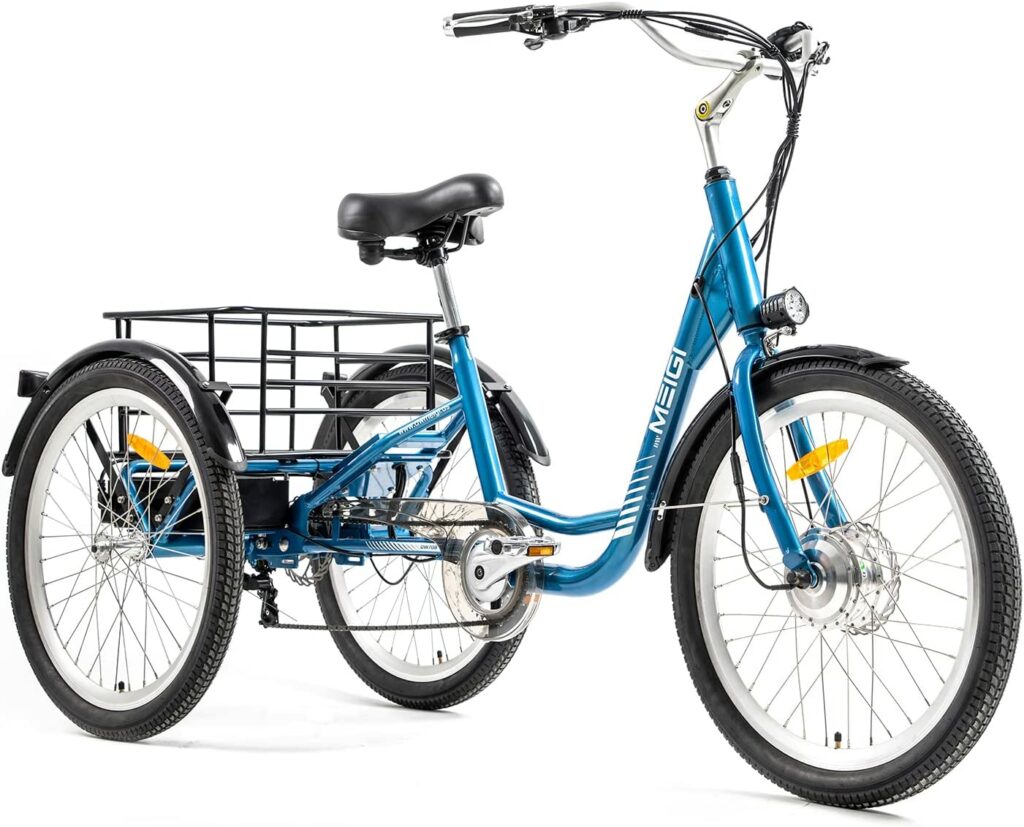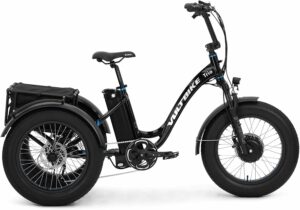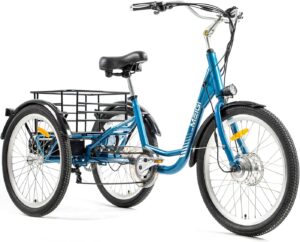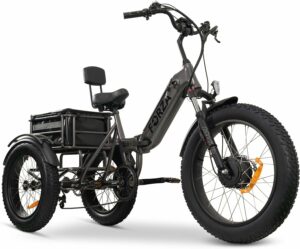E-Bike Trikes: The Perfect Blend of Power, Stability, and Mobility
Introduction
Cycling has always been a popular transportation and a beloved recreational activity.
However, a new player has emerged on the cycling scene in recent years: the e-bike trike.
With their three-wheel design and electric-assist capabilities, e-bike trikes are revolutionizing how we think about cycling.
In this article, we will explore the potential of e-bike trikes in shaping the future of cycling, discussing their advantages, sustainability benefits, health implications, safety considerations, technological advancements, urban commuting possibilities, economic and environmental impact, as well as the challenges and future outlook for this innovative form of transportation.
Provo Green Products is your reliable source for discovering sustainable products that positively impact your life and the environment.
With extensive experience in manufacturing, trades, and construction, Provo Green Products thoroughly researches each product before providing accurate and up-to-date information on its sustainability.
You can trust that you’re getting trustworthy insights to make informed choices whether you’re looking for solar products, electric bikes, eco-friendly products, renewable energy solutions, etc.
Provo Green Products is your go-to destination for finding the right green products for your lifestyle.
Disclosure: We may earn a small commission if you click on one of our links.
This does not affect the pricing of the product whatsoever.
Advantages of E-Bike Trikes
One of the critical advantages of e-bike trikes is their enhanced stability and balance.
Unlike traditional bicycles, e-bike trikes provide riders with a stable platform and eliminate the need for balancing on two wheels.
This feature makes them an attractive option for individuals with difficulty maintaining balance or confidence on a regular bike.
Moreover, e-bike trikes offer increased accessibility for individuals with mobility limitations.
The three-wheel design, coupled with the electric-assist motor, allows people of varying physical abilities to enjoy the benefits of cycling.
E-bike trikes enable those with limited mobility, such as seniors or individuals with disabilities, to experience the joy of riding while providing a practical transportation solution for their daily needs.
Additionally, e-bike trikes excel in terms of carrying capacity and storage options.
With their sturdy frame and ample cargo space, they are ideal for transporting groceries, running errands, or even carrying children.
The versatility and practicality of e-bike trikes make them a valuable asset for individuals and families seeking an alternative mode of transportation.
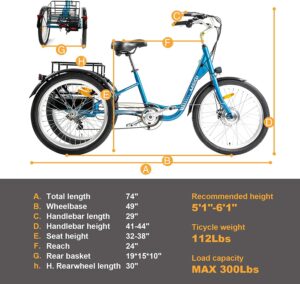
Sustainable Transportation Solution
As we strive to reduce carbon emissions and create a more sustainable future, e-bike trikes offer a promising solution for transportation needs.
By utilizing electric power instead of relying solely on fossil fuels, e-bike trikes significantly reduce the carbon footprint associated with commuting and daily travel.
The adoption of e-bike trikes as a mainstream transportation option has the potential to make a substantial impact on our environment, especially in densely populated urban areas.
Furthermore, integrating e-bike trikes into existing urban commuting systems can help alleviate traffic congestion and parking issues.
E-bike trikes offer a compact and efficient mode of transportation, allowing riders to navigate through crowded streets and find parking spaces more efficiently.
By reducing the number of cars on the road, e-bike trikes contribute to smoother traffic flow and a more sustainable urban environment.
E-Bike Trikes and Health Benefits
Beyond their practicality and environmental advantages, e-bike trikes promote health and well-being.
Even with electric assistance, cycling provides a low-impact exercise suitable for individuals of various fitness levels.
The pedaling motion engages muscles, improves cardiovascular health, and enhances overall fitness.
E-bike trikes enable people who may not have the physical endurance or strength to ride traditional bicycles to enjoy the health benefits of cycling.
Moreover, e-bike trikes encourage active and healthy lifestyles among all age groups.
The accessibility and ease of riding an e-bike trike attract individuals who may have been less inclined to engage in physical activities.
From young children to seniors, e-bike trikes offer an enjoyable means of staying active, exploring the outdoors, and improving overall fitness levels.
Safety Considerations for E-Bike Trikes
While e-bike trikes bring numerous advantages, safety should always be a top priority.
Riders must wear appropriate safety gear, including helmets and reflective clothing, to enhance visibility and protect themselves in case of accidents.
Understanding proper handling and maneuvering techniques is crucial for ensuring safety while riding e-bike trikes.
Riders should practice cornering, braking, and maneuvering at different speeds to become familiar with the unique handling characteristics of e-bike trikes.
Furthermore, knowing your region’s regulations and legal requirements for e-bike trikes is vital.
Familiarize yourself with speed limits, age restrictions, and any licensing or registration requirements that may apply.
Adhering to these regulations ensures safety and promotes a positive image of e-bike trikes within the community.
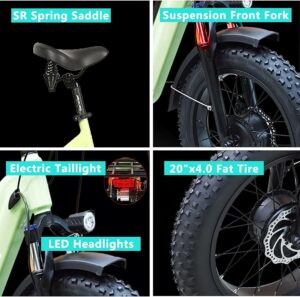
Technological Advancements in E-Bike Trikes
E-bike trikes have experienced remarkable technological advancements in recent years, enhancing their capabilities and user experience.
One area of progress is battery technology and range capabilities.
Manufacturers continually improve battery efficiency, allowing riders to cover longer distances on a single charge.
This expands the commuting range and provides more recreational rides and exploration opportunities.
In addition to battery advancements, e-bike trikes are integrating intelligent features and connectivity options.
Riders can now enjoy GPS navigation, integrated smartphone apps, and fitness-tracking capabilities.
These technological advancements enhance the overall riding experience and contribute to the growing integration of e-bike trikes into our increasingly connected world.
Furthermore, there is ongoing research and development in autonomous and self-driving e-bike trikes.
While still in the experimental stages, the concept of autonomous e-bike trikes opens up intriguing possibilities for future transportation systems.
Imagine a network of self-driving e-bike trikes providing on-demand transportation, reducing traffic congestion, and enhancing urban mobility.
Although there are challenges to overcome, the potential for autonomous e-bike trikes to shape the future of transportation is undoubtedly exciting.
E-Bike Trikes for Urban Commuting
One of the most promising applications of e-bike trikes is in urban commuting.
As cities face traffic congestion, pollution, and limited parking space, e-bike trikes offer a practical and sustainable solution.
They are well-suited for addressing the last-mile transportation challenge, where commuters can easily ride their e-bike trikes from transit stations to their final destinations.
Moreover, e-bike trikes can be integrated with existing public transportation systems, providing a seamless and efficient multimodal commuting experience.
Combining e-bike trikes with trains, buses, or subway networks allows commuters to travel longer distances without relying solely on private cars.
This integration reduces traffic congestion and promotes a healthier and more active lifestyle for urban dwellers.
E-bike sharing programs have also gained traction in many cities, further promoting using e-bike trikes for urban commuting.
These programs allow individuals to rent e-bike trikes for short periods, providing a convenient and cost-effective alternative to traditional transportation.
E-bike sharing programs have proven successful in increasing ridership and reducing reliance on cars, making cities more livable and sustainable.
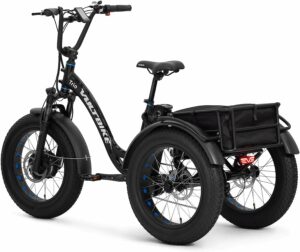
Economic and Environmental Implications
The adoption of e-bike trikes has significant economic and environmental implications.
From a financial standpoint, e-bike trikes offer cost savings compared to traditional vehicles.
The cost of purchasing and maintaining an e-bike trike is significantly lower than that of a car, and the expenses associated with fuel and parking are virtually eliminated.
Additionally, e-bike trikes require less maintenance and longer lifespans than internal combustion engine vehicles, reducing ownership costs.
Regarding the environment, using e-bike trikes leads to a substantial reduction in greenhouse gas emissions.
By replacing car trips with e-bike trike rides, individuals can contribute to mitigating climate change and improving air quality in their communities.
The environmental benefits extend beyond individuals, as the collective impact of widespread e-bike trike adoption can help cities and regions achieve their sustainability goals.
Furthermore, the reduced reliance on fossil fuels for transportation has broader implications for energy consumption and resource conservation.
By shifting to electric-powered e-bike trikes, we can decrease our dependence on finite and environmentally damaging fuel sources.
This transition aligns with the global efforts to transition to renewable energy and create a more sustainable future for future generations.
Challenges and Future Outlook
While the future of e-bike trikes is promising, several challenges must be addressed for widespread adoption and acceptance.
One of the critical challenges is infrastructure development.
Cities and urban areas must invest in dedicated cycling lanes, parking facilities, and charging infrastructure to accommodate the growing number of e-bike trike riders.
By creating a safe and accessible cycling infrastructure, cities can encourage more individuals to embrace e-bike trikes as a viable mode of transportation.
Social acceptance and perception of e-bike trikes are other challenges that must be addressed.
Some individuals may view e-bike trikes as unconventional or inferior to traditional bicycles.
Education and awareness campaigns can help dispel misconceptions and showcase the numerous benefits and potential of e-bike trikes.
Additionally, fostering a sense of community and inclusivity among cyclists, regardless of the type of bike they ride, can create a more welcoming environment for e-bike trike enthusiasts.
From a regulatory perspective, there is a need for consistent and clear legislation regarding e-bike trikes.
Different regions and countries have varying classifications and regulations for e-bike trikes, leading to confusion among riders and potential legal issues.
Developing standardized regulations that define e-bike trikes and their usage parameters can provide clarity for riders, law enforcement, and policymakers.
Looking ahead, the future of e-bike trikes is promising.
With ongoing technological advancements, we can expect further improvements in battery efficiency, range, and smart features.
Integrating e-bike trikes with emerging technologies, such as artificial intelligence and the Internet of Things, opens up exciting possibilities for intelligent transportation systems and enhanced user experiences.
As e-bike trikes become more integrated into our transportation landscape, we can anticipate a shift in urban mobility patterns.
More individuals will embrace e-bike trikes for daily commuting, reducing traffic congestion and promoting healthier and sustainable lifestyles.
Governments and urban planners must recognize the potential of e-bike trikes and incorporate them into their transportation strategies, ensuring that cities are designed to accommodate and support this innovative mode of transportation.
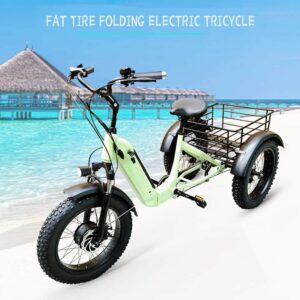
Conclusion
The emergence of e-bike trikes is reshaping the future of cycling. These three-wheeled wonders offer enhanced stability, increased accessibility, and practical storage options.
Beyond their advantages, e-bike trikes contribute to a more sustainable transportation system by reducing carbon emissions, alleviating traffic congestion, and promoting active lifestyles.
As e-bike trikes evolve with technological advancements, they hold great potential to transform urban commuting and reshape our cities. However, challenges such as infrastructure development, social acceptance, and regulatory consistency must be addressed to unlock the full potential of e-bike trikes.
By embracing the potential of e-bike trikes and fostering a supportive ecosystem, we can create more livable, sustainable, and inclusive cities.
The future of cycling is unveiled, and e-bike trikes are at the forefront of this transformative movement.
Let us embrace this exciting future and pedal towards a greener, more accessible cycling world.
Stay in Touch!
I’am a dedicated entrepreneur with many years of experience and an integrity-driven individual who is highly motivated to succeed. Leveraging extensive expertise in manufacturing, construction, and various trades, we can provide a solid foundation for sustainable living. Our meticulous research process guarantees that our information about each product is precise and current, allowing you to make informed decisions. A deep understanding of business operations empowers me to consistently implement improvements that result in ongoing success. Visit site.

